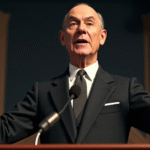Background on the Riksbank and its Role
The Riksbank, Sweden’s central bank, plays a crucial role in maintaining the country’s monetary policy. Established in 1668, it is one of the oldest central banks globally. Its primary objectives are to ensure price stability and support the government’s economic policy.
Economic Contraction and Interest Rate Reduction
Sweden’s economy contracted by 0.2% in the first quarter of 2023, partly due to a slowdown in household consumption. In response to this weakening economy, the Riksbank decided to cut its key interest rate by 0.25 percentage points to 2.0%.
Reasons for the Interest Rate Cut
The Riksbank cited concerns related to trade tensions and escalating conflicts in the Middle East as reasons for the interest rate reduction. The central bank aims to stimulate the weak economy and maintain price stability.
Inflation and Uncertainty
Sweden’s annual inflation rate fell to 0.2% in May, according to Statistics Sweden. The central bank uses the Consumer Price Index (CPIF) to guide its monetary policy, which stood at 2.3% – close to the Riksbank’s 2.0% target.
The Riksbank acknowledged that the economic outlook and inflation are “uncertain.” It highlighted significant risks associated with trade policies and geopolitical tensions, particularly due to the ongoing conflict in the Middle East.
Impact on Swedish Economy
The Riksbank’s decision to lower interest rates reflects concerns about the pace of Sweden’s economic recovery. The central bank noted that uncertainties surrounding domestic demand and international developments make it difficult to predict how quickly the Swedish economy will rebound.
Market Expectations and Future Rate Cuts
Economists widely anticipated the Riksbank’s interest rate cut. Nordea Bank economists stated that the central bank is “not in a hurry to lower rates further.” However, the Riksbank signaled that another rate cut this year remains a possibility, depending on economic developments.
Key Questions and Answers
- What is the Riksbank’s primary role? The Riksbank maintains Sweden’s monetary policy, aiming for price stability and supporting the government’s economic objectives.
- Why did the Riksbank cut its key interest rate? The central bank reduced the rate to stimulate a weakening economy amid concerns about trade tensions and geopolitical risks, including the Middle East conflict.
- What is Sweden’s current inflation rate? Sweden’s annual inflation rate fell to 0.2% in May, below the Riksbank’s target.
- How uncertain is Sweden’s economic outlook? The Riksbank acknowledged significant uncertainties surrounding domestic demand and international developments, making it difficult to predict the pace of Sweden’s economic recovery.
- Will the Riksbank cut interest rates again this year? While economists anticipate another rate cut remains possible, the Riksbank has signaled no immediate plans to lower rates further.






